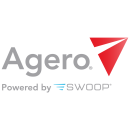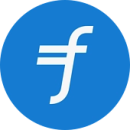Scaling an engineering team to match your company’s rapid growth can be a daunting task, posing potential challenges to the team’s structure, productivity and overall workflow.
And yet scaling is a matter of survival rather than one of endless options. Going from a small, tight-knit group of engineers to a larger, tiered engineering team is a particularly crucial step in expanding a business. It’s necessary to meet increasing demand in an effective, efficient manner. Beyond the immediate benefits to those in engineering roles, scaling an engineering team enables the entire company to achieve its goals, improve customer satisfaction and eventually boost revenue.
And yet, for all the advantages of building a bigger, more distributed engineering team, doing so requires accounting for a clear strategy, realistic timelines, effective team structure and many other variables. Beyond the baseline, it also requires a deep understanding of engineering as a profession. At Flywire, a global payments enablement and software company, ensuring that engineers feel supported to do their best work, even amid rapid expansion, is an essential component of scaling the team for success.
“Engineering is in the constant push-pull of speed over quality,” said David King, chief technology officer at Flywire. “Always make sure you are focused on quality. If quality suffers, the business suffers.”
King and tech professionals at two other fast-growing companies discussed their tactics for scaling engineering teams while reaffirming those departments’ importance within their businesses’ overall structures.
Bringing roadside service into the 21st century, Agero — in collaboration with Swoop, its SaaS platform team — uses software and automation to provide users with digital driver assistance, accident management and digital dispatch solutions.
Tell us about your engineering team and your role on it. Why did it need to be expanded so quickly?
We have a chief technology officer (CTO) at the helm of our engineering organization. Under them, we have a number of directors, including myself. We have several engineering managers and six feature teams, all independently working on different platform features. Each team includes an engineering manager, product manager, architect, technical lead, backend and frontend engineers and QA engineers. Several DevOps teammates support across the feature teams.
We have been working to shift our entire roadside assistance dispatching platform onto a new software, a process that has involved moving more than 100 client programs, thousands of third-party service contractors and hundreds of contact center customer service agents — all in order to support the approximately 12 million roadside assistance and accident events we service each year. In addition to this migration, we’ve been continuously building and innovating on the platform for greater stability, scalability and efficiency, while also creating features that improve our stakeholder experiences. In just two-and-a-half years, we have more than tripled the size of our team.
What was the process of scaling like, and how long did it take?
We’ve been methodical. We implemented a consistent recruiting process that partnered in-house talent acquisition with agencies and a robust referral program to attract global talent. We created comprehensive plans around the skills we’d need. Proficiencies like Ruby on Rails, React, React Native, GraphQL and QA automation were crucial, so bringing on more DevOps teammates, SREs and database engineers was a priority.
We wanted our team to be diverse and collaborative. We developed a structured onboarding process, ensuring new members met with the right teammates, received immersive training, and were able to meet certain criteria within the first few weeks. We made sure our platform supported the team as it scaled. We implemented unified architecture framework and coding standards, automated code analysis and leveraged project management tools. We invested in CI/CD, test automation and release automation, adopted Infrastructure as Code and implemented advanced DevOps practices.
Finally, we kept our team engaged through regular collaboration sessions, surveys, well-defined performance reviews and career pathing, using rotations so teammates could learn new languages and new product features.
We’re in the middle of a really transformative time for our technology, our business and our industry.”
What’s the most exciting project your engineering team will be taking on in the next few months?
There are many! We’re in the middle of a really transformative time for our technology, our business and our industry. The projects we are working on now, and those that we have coming up in our roadmap, are all focused on continuous improvement of the roadside assistance experience for our third-party providers, our clients and our customers. Right now, we’re implementing new types of data analysis to streamline how we identify and select the best tow operator for each vehicle breakdown — from their location to the type of equipment they have to the quality of experience they deliver. We’re also digitizing components of our customer experience so that motorists get help faster and our agents can help more people overall. Also important is work we’re doing in support of our international expansion, delivering a SaaS-based platform for potential clients overseas.

Rue Gilt Groupe is an off-price e-commerce portfolio company, connecting the next generation of shoppers to brand-name goods — ranging from fashion to furniture and travel experiences — while operating three complementary sites: Rue La La, Gilt and Shop Premium Outlets.
Tell us about your engineering team and your role on it. Why did it need to be expanded so quickly?
In my role as SVP of engineering, I’m responsible for overseeing the alignment of technology with our business goals. At RGG, technology plays an important role in providing both a compelling shopping experience to customers and internal solutions to employees. Our approach of experimenting and right-sizing our efforts to match the outcomes we’re targeting guides the way we engineer our technology solutions at RGG. As a company, we’ve seen significant growth over the past several years, and that’s led to more investments in technology so we can continue to provide a frictionless experience to members. To keep pace with this growth and ensure we’re building foundational and best-in-class solutions, we’re expanding our team and experimenting with new technologies and architectures.
What was the process of scaling like, and how long did it take?
An often overlooked part of growing and scaling quickly involves the way you assimilate new talent into your existing work streams, teams and culture. Onboarding is critical. A technique that I have found to work well is code pairing, which is both collaborative and innovative — two of our core values. Code pairing allows for onboarding that doesn’t slow development, performing knowledge transfer while developing new technologies. This knowledge transfer includes not just the domain information but also the know-how necessary for employees to be effective in our environment.
We’re expanding our team and experimenting with new technologies and architectures.”
What’s the most exciting project your engineering team will be taking on in the next few months?
At RGG, we’re most excited about initiatives that enhance our member experience and further strengthen privacy protections. Specifically, we’re upgrading our shopping discovery experiences with search and personalization, which will significantly improve how our members find products they care about.
Our members’ data privacy and security is always a top priority for us. That’s why we are rebuilding our user authentication services and registration experiences to better protect our members’ data and simplify the sign-up and sign-in process. We’ve grown quickly as a company, and our technology is growing quickly to keep up with business expectations. Our next phase of development will also include more automation, service domains and experimentation with how we host and deploy our infrastructure.

Flywire is an international payments processor that connects institutions with consumers on more than six continents.
Tell us about your engineering team and your role on it. Why did it need to be expanded so quickly?
I have the honor of being the CTO for Flywire’s multicultural engineering team. We are located in Tel Aviv, Cluj, Valencia, London, Boston and Chicago, but we function as one team. Our geographic distribution gives us an advantage to develop as we follow the sun, giving us a speed-to-market advantage over our competition.
Our engineering team lives by a few core values that make us different. We are active listeners, we are insatiable learners, and we trust one another. We practice customer-centric product development and embrace change as an opportunity to grow and improve. We balance our desire to seek excellence with speed, and we believe we can achieve excellence through iterative learning.
The scale of my team was consistent with Flywire’s overall business growth. A few highlights from 2021 included completing our initial public offering (IPO) in May, expanding some of our verticals into new geographies like Canada and Latin America, seeing our total payment volume increase 76 percent year-over-year to $13.2 billion in 2021 alone.
Our engineering team lives by a few core values that make us different.”
What was the process of scaling like, and how long did it take?
Engineering managers need to have strong and collaborative partnerships with the talent acquisition team. Be sure that you have talent-acquisition talent in each region, familiar with that region’s unique interviewing and hiring rituals. Make sure there is a formal process for getting candidates into the queue, for the number of interviews and for any “homework” assignments. The process should be thorough but not too burdensome on candidates. Make it clear what the role is and who an individual reports to.
Keep teams small. We limit the size of our teams to six. These smaller, defined teams have their own initiatives. Focus first on fit, then talent. You cannot underestimate the importance of the people you are bringing into your organization as a cultural fit. Don’t compromise here. Make sure management clearly communicates the direction of the company and the teams’ goals, and that team members feel empowered to communicate to their managers and the company.
What’s the most exciting project your engineering team will be taking on in the next few months?
With Flywire’s rapid growth, there is no shortage of exciting projects to work on. In fact, our challenge is focusing on the right projects that will drive future value for the company and saying “no” to the shiny objects that look enticing but are really a distraction.
As part of scaling our engineering team, we also scaled our product management process. We began by aligning the entire company on Flywire’s strategic pillars. We then interviewed the leaders and team members in our education, healthcare, travel and B2B verticals as well as leaders of our internal areas such as global payments and compliance. This was all put into the prioritization process to ensure we focus on items that align with our strategic pillars and will generate long term value for Flywire — but that also balance short-term needs and address technical debt.










